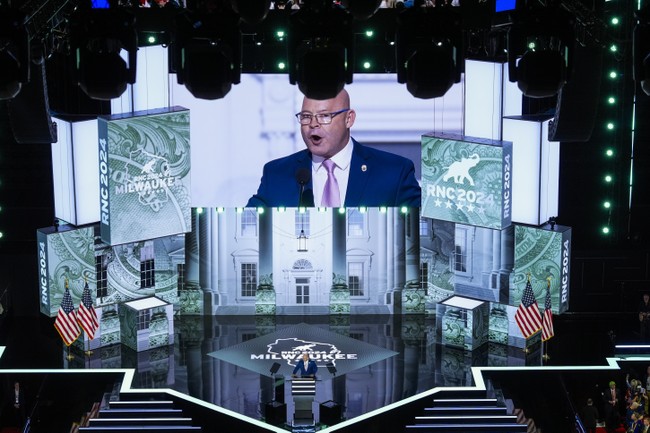Undecided Voters to Decide Tight 2024 Harris vs. Trump Race
With both candidates closely matched in polls, the focus shifts to undecided voters and swing states, which could ultimately determine the outcome of the 2024 presidential election.
Published September 19, 2024 - 00:09am

Image recovered from washingtontimes.com
In a starkly divided America, where almost everyone is positioned into pro-Trump and anti-Trump factions, a tiny sliver of the electorate—the elusive undecided voter—is set to be the ultimate gatekeeper of the 2024 presidential election. Comprising less than 10% of the electorate, this small pocket of voters skews younger, male, white, and working-class. They are more independent, more moderate, and less politically engaged than the broader electorate, according to analysts.
Pessimistic about the direction of the nation, concerned about pocketbook issues, and hungry for change, these late-breakers are contemplating whether to cast their support behind an unruly former president who has refused to accept he lost the 2020 election or a shape-shifting vice president who co-signed policies that many voters blame for their rising cost of living.
We are spending an enormous amount of time and resources moving more people to our side and hardening their views against Kamala Harris, stated James Blair, political director for the Trump campaign and the Republican National Committee. Blair emphasized that although the issue set and the policies favor Donald Trump, clear communication of these policies continues to be paramount in light of perceived media misrepresentation.
Mike Noble of the polling firm Noble Predictive Insights described undecided voters as a bit of a hodgepodge, as they often combine conflicting political characteristics. For example, some blue-collar female voters are concerned about abortion rights championed by Democrats but also lean Republican on pocketbook issues. On the other hand, some Black male voters have a natural allegiance with Democrats but feel they might be better off economically with Republicans.
Further complicating Harris's task, surveys from swing states and national polls reveal a tight race. In Pennsylvania, several polls conducted post-debate showed Harris and Trump running neck-and-neck. The Suffolk/USA Today poll conducted between September 11 and 15 found Harris leading Trump among likely voters, 48.6-45.6 percent, a lead within the margin of error. Another survey conducted by Insider Advantage from September 14-15 showed Trump leading Harris by 50-48 percent, still within the margin of error.
When it comes to voter approval, Harris faces significant hurdles. A New York Times/Sienna College poll revealed that 28% of likely voters thought they still needed to learn more about her, compared to just 9% for Trump. Meanwhile, Harris's approval ratings as vice president are polarized, with 48% of respondents disapproving of her performance. The Trump campaign seizes on this, reminding voters of recent economic challenges under the Biden-Harris administration.
In reaction to Harris's campaign efforts, voters in critical swing states, including Pennsylvania and Nevada, have expressed dissatisfaction with her response style. In videos circulated on new platforms like 2Way, undecided voters criticized Harris for her perceived lack of direct answers. With Harris, she just to date hasn't given me a reason to vote for her, said Jamie from Nevada. This sentiment was echoed by Kimberly from Pennsylvania, who felt that Harris's non-answers were insulting my intelligence and failing to make her feel confident about any potential Harris presidency.
Contrastingly, Harris's national lead is fraught with its own uncertainties. Prognosticator Nate Silver noted Harris's three-point national lead over Trump but also highlighted her vulnerability in the Electoral College, where she has nearly a 25% chance of winning the popular vote but losing the Electoral College vote. This juxtaposition underscores the complexity of the 2024 election, where both popular sentiment and electoral logistics play critical roles.
Polling trends indicate varied levels of support among different demographics. According to the USA TODAY/Suffolk University poll, Harris has made notable gains among young voters and Hispanic voters, demonstrating significant percentage swings in her favor. However, challenges remain as a significant portion still views the nation as being on the wrong track, and many feel they are worse off compared to four years ago.
Both candidates are racing against time to convert undecided voters and consolidate their standing in crucial swing states. With Pennsylvania, Michigan, and Wisconsin among the key battlegrounds, every outreach effort, campaign ad, and policy discussion is meticulously calculated to capture the elusive center. The efficacy of these strategies will be revealed as the November 5 election day approaches.
For Vice President Kamala Harris, the challenge lies in differentiating herself from the Biden administration's unpopular policies while also contending with the charismatic and controversial figure of Donald Trump. As the country braces itself for an intense election season, the influence of undecided voters and swing states is poised to be the defining factor in one of America's most closely-watched political contests.







